The Sunday after our wild and wonderful rains had stopped, I was off on another assignment with magazine travel writer and fellow Texas Master Naturalist, Eileen Mattei.
Travelling along Sixth Street in Brownsville, the road along the back of the zoo, Texas ebony trees were nearly unrecognizable so laden with blooms were they. Certainly, the likes of which I have never seen!
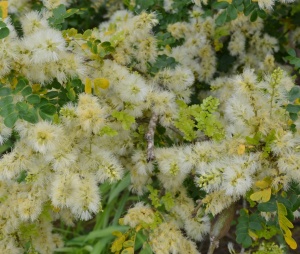
Even Javi Gonzalez (South Padre Island Birding and Nature Center educational director) noticed the difference and posted on Rio Grande Valley Butterflies Facebook page, “Texas ebonies, tenazas and anacuas along the road (from McAllen) were blooming harder than I’ve ever seen! All that rain making them burst.”
Eileen’s magazine stories take me on jaunts and forays into places I’ve not yet been. This time it was rails-to-trails and hike-and-bike trails that begin in downtown Brownsville and travel the battlefield route up some ten miles north, ending near the Palo Alto Battlefield.
Leaving Sixth Street, we zipped over to Brownsville’s Resaca de la Palma Battlefield. If you’ve never seen our famed native monarch butterfly larval food plants, zizotes, in all their natural wonder, travel around the loop track near the entrance to that historic park.
Zizotes by the hundreds.
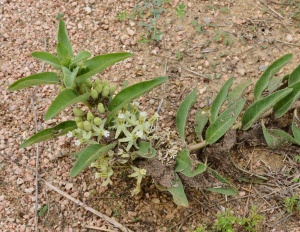

In the distance, tiny white blooms fluttered like flags in the wind — rain Lilies.
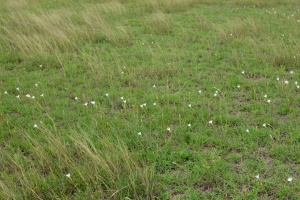
Cebolleta, Rain Lily, Cooperia drummondii, often appearing after rain, are endemic to Texas.
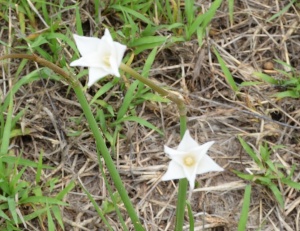
Back in the car, we whipped over to somewhere in Brownsville where the trail crosses a peaceful resaca. An old train trestle, now planked, supports pedestrian traffic.
We were entertained by a flotilla of Muscovy ducks out for a Sunday paddle.
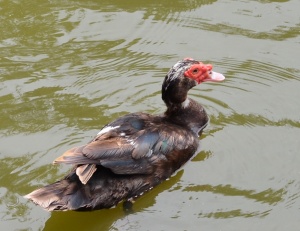
The Muscovy were probably a domestic clan which come in a wide range of colors, from all white to mottled black and white, tan and other variations. The red wattles are much more extensive and the domestic Muscovy are larger than their non-urbanized cousins.
Bright coral flowers of scarlet pea, Indigofera miniata, lay prostrate in the sandy wasteland between the trail and road as we left the peaceful trail for the next stop.

Next we toddled over to Resaca de la Palma State Park and landed a private (except for the mosquitoes) tour with weekend tram operator James, who narrated our jaunt and answered all our questions.
If you’ve not yet been to Resaca de la Palma State Park, they have one of the famous Montezuma bald cypress, Taxodium distichum, taking up residence, conveniently next to an observation deck over the resaca. The tree is tall enough that you’re nearly standing in the boll of the tree; you can hold the soft, ever-greenish needles in your hand and marvel at this rare and amazing native Valley tree.
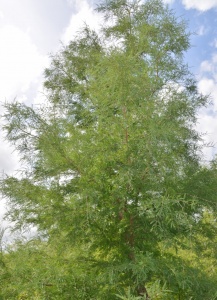
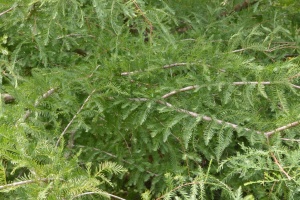
Funky pink spiky balls caught our attention as we exited the deck. Black mimosa, according to James. Plants of Deep South Texas, page 246, agrees, Mimosa asperata, also called zarza. The aggie-horticulture Webpage describes this plant so wickedly well, I’ll just copy it here:
“It is a densely-branched shrub forming impenetrable thickets whose branches and leaves are viciously armed with stiff, flattened, recurved prickles.”
https://aggie-horticulture.tamu.edu/ornamentals/nativeshrubs/mimosaasperata.htm
Zarza is the Spanish word for blackberry bush. “The shrub prefers wet areas at the edges of water courses or resacas, usually in the lower Rio Grande in Cameron and Hidalgo counties, and into Mexico. It is less common along the coast farther north.”
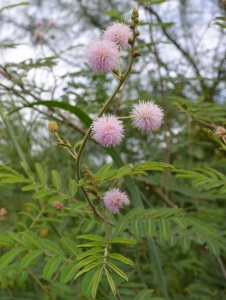
Another day’s adventure took us to Hilltop Gardens in Lyford, Texas. The historic aloe farm and its exotic flora is quite grand; an experience not to be missed. Since the flora is mostly non-native, I’ll talk instead about a piece of native artwork that begged us to photograph it.
We were both taken by the artistry of a cutter bee that added its design to an otherwise perfect leaf arrangement. It reminded me of a fun art assignment years ago in the study of positive and negative space.
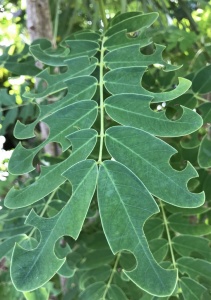
Leaf cutter bees are considered pests by most gardeners because they absolutely deface a perfectly good leaf by making half-moon cutouts in it. The bees don’t eat the leaf, they use the leaf cut-out to make nest cells for their young.
This Website explains the process:
https://www.gardeningknowhow.com/plant-problems/pests/insects/leaf-cutter-bees.htm
“The cut piece of leaf is formed into what might be called a nursery chamber where the female cutter bee lays an egg. The female cutter bee adds some nectar and pollen to each little nursery chamber. Each nest cell looks a bit like the end of a cigar.”
And then, as we were approaching the hospitality building at the end of our Hilltop wanderings, a large critter plopped itself in front of me. “OMG!” I exclaimed! “A giant toad!” It was as big as my foot!

I later uploaded a photo to iNaturalist — after having Eileen hold the Nature Tracker ruler near the toad while I snapped off another shot.
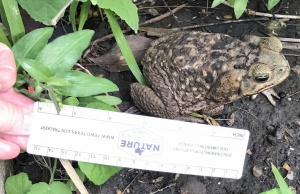
The iNaturalist site came back with, Giant Toad Rhinella horribills. I did not find much information about the giant toad on the Internet except that the distribution is Lower Rio Grande Valley region of southern Texas and southern Sonora and southwestern Chihuahua (Mexico) south along the coastal plains through tropical lowland Mexico and Central America to the west slope of the Venezuelan Andes, western and northern Columbia, west coast of Ecuador and extreme northwestern Peru.
Grab a couple of friends and get out and about to places you’ve not yet been. We’d love to hear about your discoveries.
What a nice adventure and where’s Seth when you need him?
Yes, it’s so fun discovering things. Ah, Seth — he’s far and away and missed. Hopefully he’s discovering things for a new book, perhaps.
What a finely woven tapestry peppered with wonderful photos! I finally know the name of the star-like white flower. The scarlet peas are delightful, too. But you saved the best for last: The giant toad rocked my boat!
Thank you for such grand flattery. Yeah, that Giant Toad certainly got my attention! Once I came to grips with its size, you know, it’s really no different than having a cat or small dog for a pet. Just for a moment, though, it felt like I’d fallen through a rabbit hole.
Lots of subjects for nature journaling and sketching! For those of you who remembered my post of the rain lily, there’s an example. Thank you, Anita, for sharing your and Eileen’s walkabout in our precious RGV! This is another form of nature journaling for all of you drawing resistant folks. ; )
Thank you, Linda! Thank you for accepting photos as a form of nature journaling — for those of us unfortunate enough to be drawing challenged.